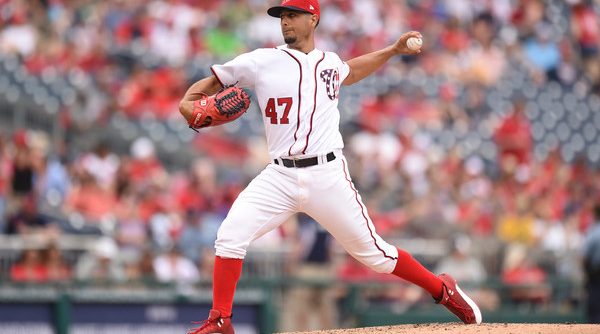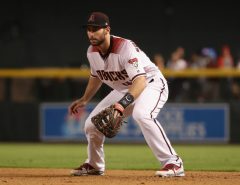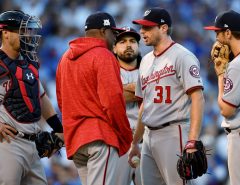Three turns of the rotation into the 2017 season and the most frustrating pitcher on the Nationals staff has put together a trio of strong starts. Gio Gonzalez has allowed only three earned runs (plus two unearned) in 20 1/3 innings, and if not for The 2017 Nationals Bullpen in his first start and The 2017 Nationals Bullpen in his third start, the 31-year old lefthander would have three wins as well.
First for the good news: Gio has been extremely efficient with his pitches, staying under 100 through six innings in each of his starts. Twice he has gotten through seven innings, something he did only four times all season last year (!!!!). He has issued only four walks (this is slightly misleading – I’ll get to that later) and although he has not struck out many hitters, he has induced soft contact nearly 25% of the time (according to FanGraphs), well above average for his career.
I won’t use the phrase “small sample size” in this piece because it’s stupid and also, what would be the point about talking about baseball in April if you always have to include a caveat for sample size…? Therefore, let us assume that we can trust the numbers, especially the contact data. Even with the aforementioned good stats, there are some less attractive numbers in play.
Gonzalez has a higher fly ball rate this year than ever at 38%. He is also struggling to miss bats, striking out 15 hitters so far and a whiff rate at 9%, below his 9.5% career mark. He is holding hitters to an unsustainably low BABIP of .271 – he hasn’t had a season-long BABIP below .280 since 2012. The most unsustainable mark, however, is his strand rate: over 89% of his baserunners are getting stranded.
All of these numbers come with a kicker that makes everything worse: Gio Gonzalez has not pitched against a good team yet. He opened the season against a Marlins team that should finish around .500, a Cardinals team that is at serious risk of having a losing season for the first time in a decade, and the still-awful Phillies whose lineup is likely the worst in the NL East.
Let’s talk about that third start, April 16th at Nationals Park against the Phillies. The biggest concern about Gio is that he often gets into a mess in the middle of the game that he is unable to get out of because he loses control of himself and the strike zone. If you only look at the numbers from that outing on April 16th, it looks like he struggled with control (42 balls on 105 pitches) but was able to find outs and keep guys off base via the free pass. This is true, at least from a numbers standpoint. If you watched the game, however, what you saw instead was a bad Phillies team getting into hitters counts and then impatiently bailing Gio out with weak grounders and fly balls. I am confident that this deflated the number of walks he would have thrown if this game was against a league-average offense.
Don’t get me wrong, he made some good pitches, especially with RISP and two outs in the second and third innings. He never got out of his rhythm even after a walk or hit. Still, I cannot justify giving all the credit to Gio and not credit the help a poor Phillies team gave him until given more reason to do so.
My worry is that there are too many signs pointing to Gio Gonzalez being exactly the same as he has been the past few seasons. Interestingly, he had a similarly hot start in 2016 when he ended April with a 1.42 ERA and got through at least six innings in all four starts. Giving up 45 runs just over 65 innings over the following two months quickly erased the memory of that great first month as he struggled to get through six innings consistently for the rest of the year. Fortunately, we will have a good chance to see if a second year with Pitching Coach Mike Maddux has reinvented Gio Gonzalez: He is lined up to start at Citi Field and at Coors Field, homes of a pair of highly potent offenses.
So what should you be looking for if you think Gio will have his best year since 2012? First, watch for how he reacts to inevitable leadoff hits or walks that have derailed good starts in recent years. Also take note of his usage of his curveball. Gonzalez is trusting it more than ever thus far, throwing it over 24% of the time after never throwing it even 20% of the time in the last three seasons. It has been an effective pitch this year in putting batters away.
Simply put, I want to see Gio Gonzalez have success against playoff caliber teams before believing he is anything more than I think he is. We will get a chance to see that very soon.
Tags: Gio Gonzalez, Nationals, Nats, Washington Nationals




Leave a Reply